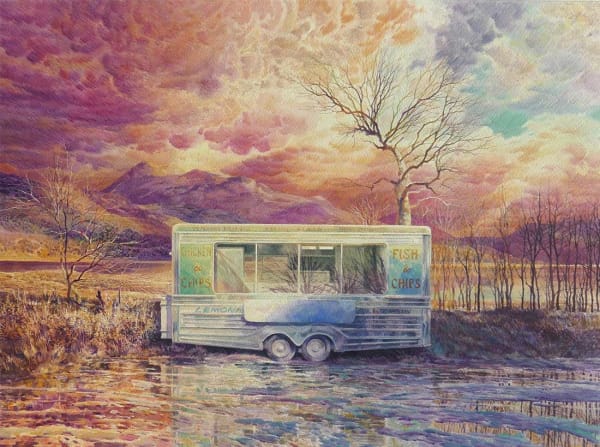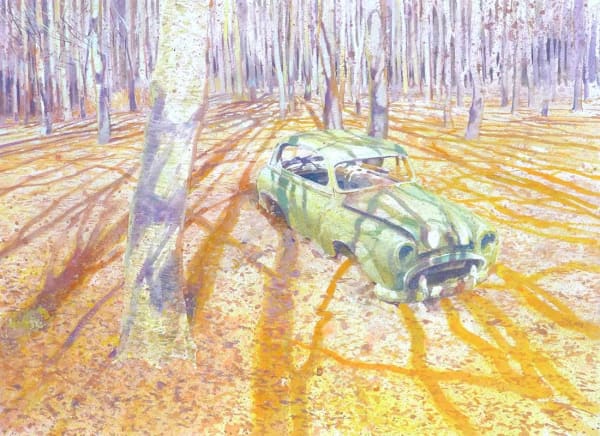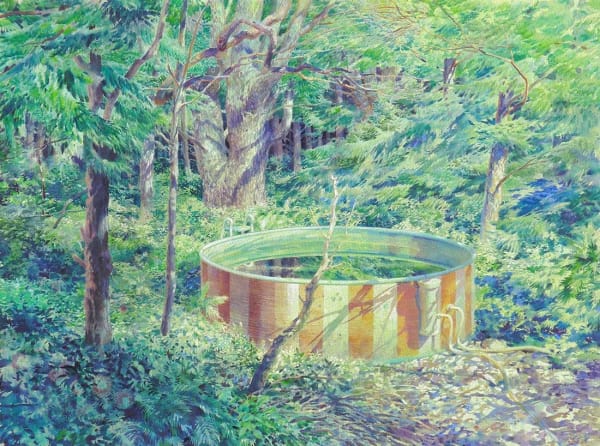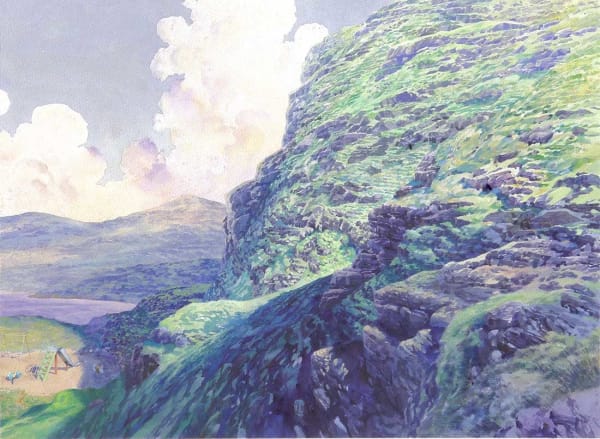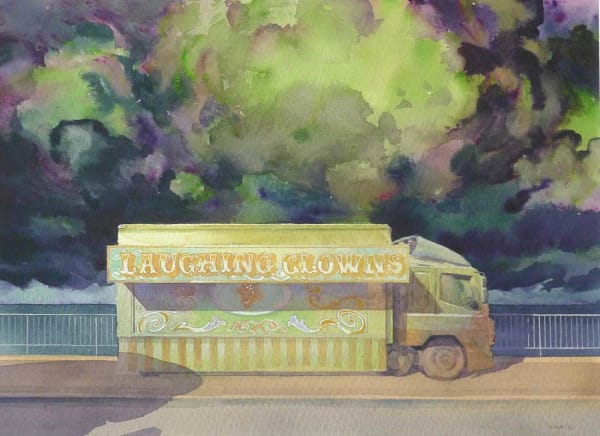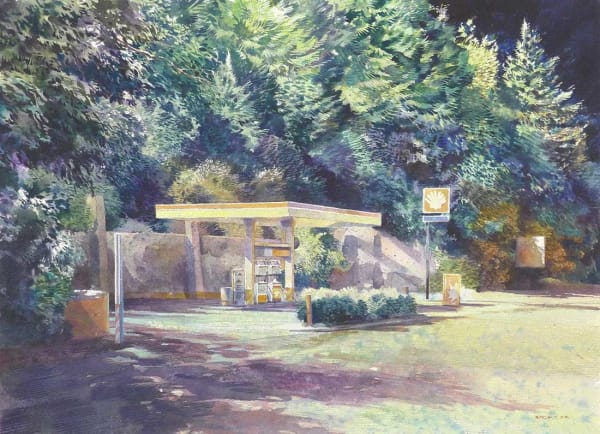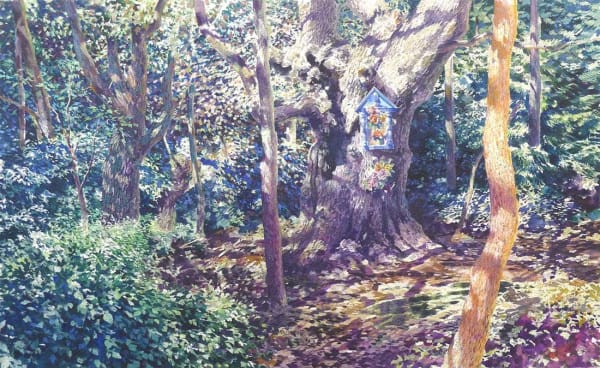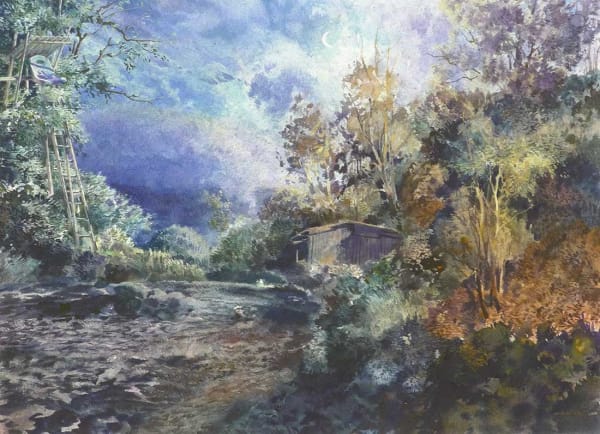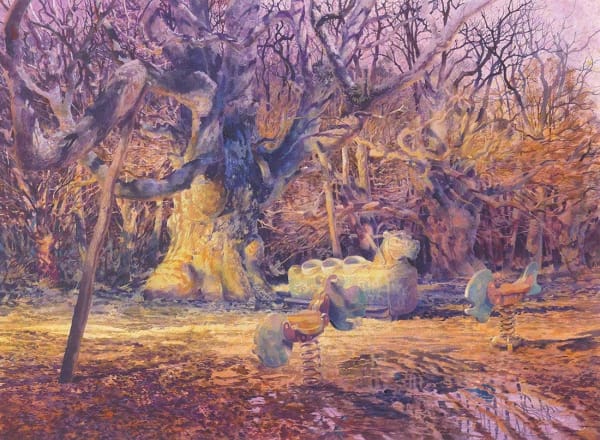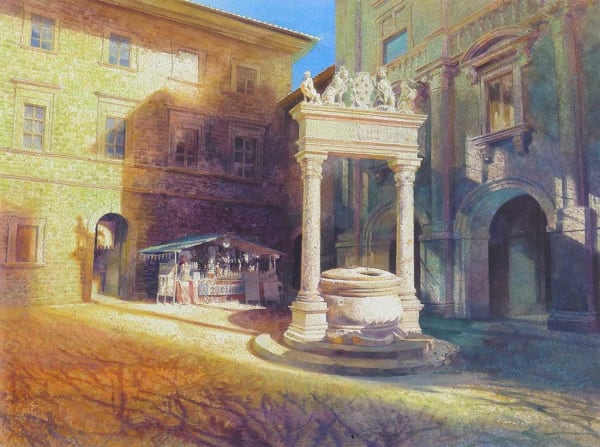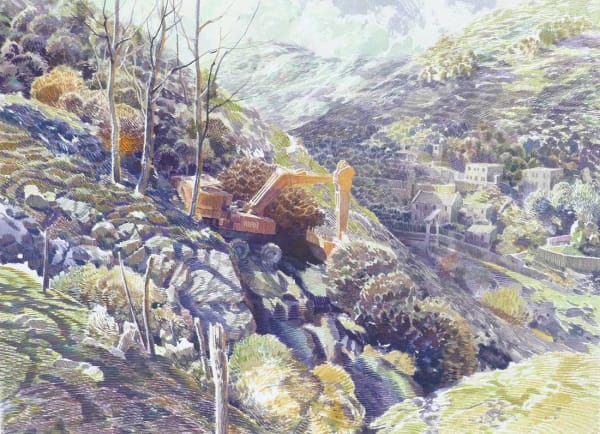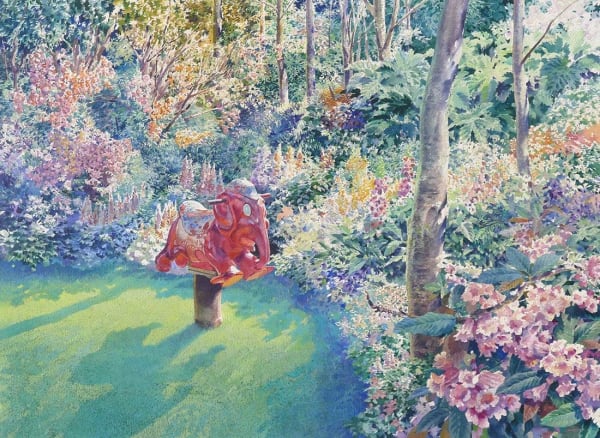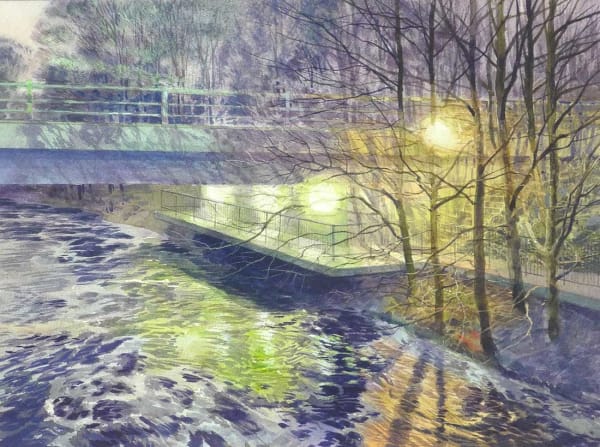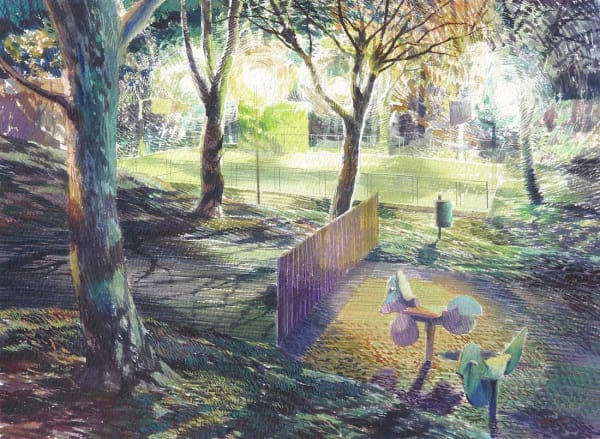David Forster RSW: Play
An exhibition of new and recent paintings by Edinburgh based artist David Forster, Play explores our ritual nature of play and leisure within the landscape.
David Forster RSW SSA is renowned for his intricate skill in the use of watercolour and acrylic as mediums to create an intense atmosphere, manipulating light and accentuating architecture to reinvent a romantic narrative.
In early paintings, Forster was fascinated by the way in which nature creeps back into the city, and how we model parks and planted spaces to evoke an idealised sense of our relationship with nature, and the stories we tell about it. As Forster's work has moved out into the country, this balance has reversed, with the man-made often now only a tiny element dwarfed by the wild.
The new works presented in Play focus on the theme of play and leisure, of how human interaction within the landscape affects the environment and our surroundings. As is usual for Forster there are references back to archetype, myth and fairytale within his paintings.
This simple title succinctly gets to the nub of the issue, as well as slightly hinting at Forster's own process of exploration within his practice for this exhibition.
"I believe that in every landscape ever painted there is also a representation of a cultural or individual state of mind. All landscape paintings are symbols.
The cityscapes we build for ourselves, the way we order them to our needs, the views we command. All these resonate with other meaning.
So, in city parks, tiny facsimiles of great landscapes are planted in stone and bush. Cycleways and footpaths run through threaded ranks of birch and fir. Ribbon imaginings of the great Greenwood. In children's playgrounds, the wooden outlines of painted horses gallop through fantasy hunting grounds, and flat-packed ships point unseaworthy prows towards the ocean.
Beyond the city's edge, footpaths evoke the tread of all those who passed before, commanding views over other times. By the wayside, plaques and waymarks are stations of these stories, recording them in hieroglyph and text.
Everywhere another 'here', and another 'now' are found.
Many years ago, I dropped the people from my paintings. Emptied of internal actors such depopulated landscapes allowed the symbolic to come to preeminence. Over time, I came to believe that the purest expression of our narrative relationship with the land showed through our use of it for leisure. In moments of play we are closest to story.
So I began to concentrate on intrusion of these diversions into the landscape. The paths, the playgrounds and the sports fields. The artfully landscaped, and the consciously picturesque set against the supposed wild. This has formed the basis of my work for a decade.
There is mystery in the mundane."
